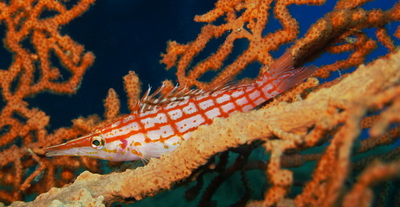Phuket Dive Guide : Koh Lipeh , Tarutao & Butang islands

About the location and site
The archipelago of 51 islands of the Koh Tarutao Marine National Park in Southern Thailand lies about 55 km northwest of Langkawi and 180 km south of Phuket. Koh Tarutao National Marine Park was formed in1974 and is Thailand’s oldest national park.
The archipelago consists of several groups of islands around Koh Tarutao, Koh Adang, Koh Rawi, Koh Lipeh, Koh Tong, Hin Ngam, Koh Yang, and Koh Bitsi. Sometimes they are also referred to as the Butang Group.
These islands are still largely unknown to tourists. However, the underwater world around these islands is some of the best diving and snorkeling spots in Thailand. Clear waters support rich coral reefs, lobsters, and around 25% of the world's tropical fish species, including lionfish, angelfish, butterflyfish, groupers, trumpetfish and others. Dolphin encounters are common and rare dugong encounters are possible too.
The archipelago of 51 islands of the Koh Tarutao Marine National Park in Southern Thailand lies about 55 km northwest of Langkawi and 180 km south of Phuket. Koh Tarutao National Marine Park was formed in1974 and is Thailand’s oldest national park.
The archipelago consists of several groups of islands around Koh Tarutao, Koh Adang, Koh Rawi, Koh Lipeh, Koh Tong, Hin Ngam, Koh Yang, and Koh Bitsi. Sometimes they are also referred to as the Butang Group.
These islands are still largely unknown to tourists. However, the underwater world around these islands is some of the best diving and snorkeling spots in Thailand. Clear waters support rich coral reefs, lobsters, and around 25% of the world's tropical fish species, including lionfish, angelfish, butterflyfish, groupers, trumpetfish and others. Dolphin encounters are common and rare dugong encounters are possible too.
Koh Lipeh is the smallest archipelago and forms the extreme south Thailand border. Koh Lipeh is surrounded by smaller islands, deep channels and submerged rock outcrops, offering great habitat for marine life.
The top spot is Eight Mile Rock, a submerged peak that harbors abundant life at several depths. The most noticeable thing about the diving around Lipeh is that there are not many other divers around. In marked contrast to other dive destinations in Thailand, it is not uncommon for a group to have a dive site all to themselves. The corals are, if not the best in Thailand, then very close to being so. The fish are mainly small, colourful reef fish. The visibility is excellent in this incredibly clear water. Drift diving is a Lipeh speciality.
Blue spotted Kuhl's stingrays are plentiful in the area. At the island points, where currents bring in water from the deep, it is possible to encounter pelagic fish. Due to its sand bottom and morphology, it is better to avoid full and new moon when diving at Lipeh as the currents can be stronger, causing sand dispersion and reducing visibility.
The top spot is Eight Mile Rock, a submerged peak that harbors abundant life at several depths. The most noticeable thing about the diving around Lipeh is that there are not many other divers around. In marked contrast to other dive destinations in Thailand, it is not uncommon for a group to have a dive site all to themselves. The corals are, if not the best in Thailand, then very close to being so. The fish are mainly small, colourful reef fish. The visibility is excellent in this incredibly clear water. Drift diving is a Lipeh speciality.
Blue spotted Kuhl's stingrays are plentiful in the area. At the island points, where currents bring in water from the deep, it is possible to encounter pelagic fish. Due to its sand bottom and morphology, it is better to avoid full and new moon when diving at Lipeh as the currents can be stronger, causing sand dispersion and reducing visibility.








